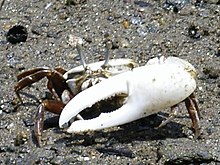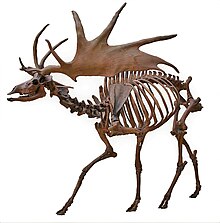The
human brain is divided into two hemispheres–left and right. Scientists
continue to explore how some cognitive functions tend to be dominated by
one side or the other; that is, how they are lateralized.
The lateralization of brain function is the tendency for some neural functions or cognitive processes to be specialized to one side of the brain or the other. The medial longitudinal fissure separates the human brain into two distinct cerebral hemispheres, connected by the corpus callosum.
Although the macrostructure of the two hemispheres appears to be almost
identical, different composition of neuronal networks allows for
specialized function that is different in each hemisphere.
Lateralization of brain structures is based on general trends expressed
in healthy patients; however, there are numerous counterexamples to each
generalization. Each human's brain develops differently leading to
unique lateralization in individuals. This is different from
specialization as lateralization refers only to the function of one
structure divided between two hemispheres. Specialization is much easier
to observe as a trend since it has a stronger anthropological history. The best example of an established lateralization is that of Broca's and Wernicke's areas where both are often found exclusively on the left hemisphere. These areas frequently correspond to handedness,
however, meaning that the localization of these areas is regularly
found on the hemisphere corresponding to the dominant hand (anatomically
on the opposite side). Function lateralization, such as semantics, intonation, accentuation, and prosody, has since been called into question and largely been found to have a neuronal basis in both hemispheres. Another example is that each hemisphere in the brain tends to represent one side of the body. In the cerebellum this is the same bodyside, but in the forebrain this is predominantly the contralateral side.
Lateralized functions
Language
Language
functions such as grammar, vocabulary and literal meaning are typically
lateralized to the left hemisphere, especially in right-handed
individuals.
While language production is left-lateralized in up to 90% of
right-handers, it is more bilateral, or even right-lateralized, in
approximately 50% of left-handers.
Broca's area and Wernicke's area areas associated with the production of speech and comprehension of speech, respectively, are located in the left cerebral hemisphere for about 95% of right-handers, but about 70% of left-handers.
Sensory processing
The
processing of basic sensory information is lateralized by being divided
into left and right sides of the body or the space around the body.
In vision, about half the neurons of the optic nerve
from each eye cross to project to the opposite hemisphere and about
half do not cross to project to the hemisphere on the same side. This means that the left side of the visual field is processed largely by the visual cortex of the right hemisphere and vice versa for the right side of the visual field.
In audition, about 90% of the neurons of the auditory nerve from one ear cross to project to the auditory cortex of the opposite hemisphere.
In the sense of touch, most of the neurons from the skin cross to project to the somatosensory cortex of the opposite hemisphere.
Because of this functional division of the left and right sides
of the body and of the space that surrounds it, the processing of
information in the sensory cortices is essentially identical. That is,
the processing of visual and auditory stimuli, spatial manipulation, facial perception, and artistic ability are represented bilaterally. Numerical estimation, comparison and online calculation depend on bilateral parietal regions
while exact calculation and fact retrieval are associated with left
parietal regions, perhaps due to their ties to linguistic processing.
Value systems
Rather
than just being a series of places where different brain modules occur,
there are running similarities in the kind of function seen in each
side, for instance how right-side impairment of drawing ability making
patients draw the parts of the subject matter with wholly incoherent
relationships, or where the kind of left-side damage seen in language
impairment not damaging the patient's ability to catch the significance
of intonation in speech. This has led Iain McGilchrist to say that the two hemispheres as having different value systems,
where the left hemisphere tends to reduce complex matters such as
ethics to rules and measures, where the right hemisphere is disposed to
the holistic and metaphorical.
Clinical significance
Depression
is linked with a hyperactive right hemisphere, with evidence of
selective involvement in "processing negative emotions, pessimistic
thoughts and unconstructive thinking styles", as well as vigilance,
arousal and self-reflection, and a relatively hypoactive left
hemisphere, "specifically involved in processing pleasurable
experiences" and "relatively more involved in decision-making
processes".
Additionally, "left hemisphere lesions result in an omissive response
bias or error pattern whereas right hemisphere lesions result in a
commissive response bias or error pattern." The delusional misidentification syndromes, reduplicative paramnesia and Capgras delusion are also often the result of right hemisphere lesions.
Hemisphere damage
Damage
to either the right or left hemisphere, and its resulting deficits
provide insight into the function of the damaged area. Left hemisphere
damage has many effects on language production and perception. Damage or
lesions to the right hemisphere can result in a lack of emotional prosody
or intonation when speaking. Right hemisphere damage also has grave
effects on understanding discourse. People with damage to the right
hemisphere have a reduced ability to generate inferences, comprehend and
produce main concepts, and a reduced ability to manage alternative
meanings. Furthermore, people with right hemisphere damage often exhibit
discourse that is abrupt and perfunctory or verbose and excessive. They
can also have pragmatic deficits in situations of turn taking, topic
maintenance and shared knowledge.
Lateral brain damage can also affect visual perceptual spatial
resolution. People with left hemisphere damage may have impaired
perception of high resolution, or detailed, aspects of an image. People
with right hemisphere damage may have impaired perception of low
resolution, or big picture, aspects of an image.
Plasticity
If
a specific region of the brain, or even an entire hemisphere, is
injured or destroyed, its functions can sometimes be assumed by a
neighboring region in the same hemisphere or the corresponding region in
the other hemisphere, depending upon the area damaged and the patient's
age.
When injury interferes with pathways from one area to another,
alternative (indirect) connections may develop to communicate
information with detached areas, despite the inefficiencies.
Broca's aphasia
Broca's aphasia is a specific type of expressive aphasia and is so named due to the aphasia that results from damage or lesions to the Broca's area
of the brain, that exists most commonly in the left inferior frontal
hemisphere. Thus, the aphasia that develops from the lack of functioning
of the Broca's area is an expressive and non-fluent aphasia. It is
called 'non-fluent' due the issues that arise because Broca's area is
critical for language pronunciation and production. The area controls
some motor aspects of speech production and articulation of thoughts to
words and as such lesions to the area result in the specific non-fluent
aphasia.
Wernicke's aphasia
Wernicke's aphasia
is the result of damage to the area of the brain that is commonly in
the left hemisphere above the sylvian fissure. Damage to this area
causes primarily a deficit in language comprehension. While the ability
to speak fluently with normal melodic intonation is spared, the language produced by a person with Wernicke's aphasia is riddled with semantic
errors, and may sound nonsensical to the listener. Wernicke's aphasia
is characterized by phonemic paraphasias, neologism or jargon. Another
characteristic of a person with Wernicke's aphasia is that they are
unconcerned by the mistakes that they are making.
Society and culture
Misapplication
Terence Hines
states that the research on brain lateralization is valid as a research
program, though commercial promoters have applied it to promote
subjects and products far outside the implications of the research. For example, the implications of the research have no bearing on psychological interventions such as EMDR and neurolinguistic programming, brain-training equipment, or management training.
Pop psychology
The
oversimplification of lateralization in pop psychology. This belief was
widely held even in the scientific community for some years.
Some popularizations oversimplify the science about lateralization,
by presenting the functional differences between hemispheres as being
more absolute than is actually the case.
Sex differences
In the 19th century and to a lesser extent the 20th, it was thought
that each side of the brain was associated with a specific gender: the
left corresponding with masculinity and the right with femininity and
each half could function independently.
The right side of the brain was seen as the inferior and thought to be
prominent in women, savages, children, criminals, and the insane. A
prime example of this in fictional literature can be seen in Robert Louis Stevenson's Strange Case of Dr. Jekyll and Mr. Hyde.
Evolutionary advantage
The
widespread lateralization of many vertebrate animals indicates an
evolutionary advantage associated with the specialization of each
hemisphere.
History
Broca
One of the first indications of brain function lateralization resulted from the research of French physician Pierre Paul Broca, in 1861. His research involved the male patient nicknamed "Tan", who suffered a speech deficit (aphasia); "tan" was one of the few words he could articulate, hence his nickname. In Tan's autopsy, Broca determined he had a syphilitic lesion in the left cerebral hemisphere. This left frontal lobe brain area (Broca's area)
is an important speech production region. The motor aspects of speech
production deficits caused by damage to Broca's area are known as expressive aphasia. In clinical assessment of this aphasia, it is noted that the patient cannot clearly articulate the language being employed.
Wernicke
German physician Karl Wernicke
continued in the vein of Broca's research by studying language deficits
unlike expressive aphasia. Wernicke noted that not every deficit was in
speech production; some were linguistic. He found that damage to the
left posterior, superior temporal gyrus (Wernicke's area) caused language comprehension deficits rather than speech production deficits, a syndrome known as receptive aphasia.
Imaging
These
seminal works on hemispheric specialization were done on patients or
postmortem brains, raising questions about the potential impact of
pathology on the research findings. New methods permit the in vivo comparison of the hemispheres in healthy subjects. Particularly, magnetic resonance imaging (MRI) and positron emission tomography (PET) are important because of their high spatial resolution and ability to image subcortical brain structures.
Movement and sensation
In the 1940s, neurosurgeon Wilder Penfield and his neurologist colleague Herbert Jasper developed a technique of brain mapping to help reduce side effects caused by surgery to treat epilepsy. They stimulated motor and somatosensory cortices
of the brain with small electrical currents to activate discrete brain
regions. They found that stimulation of one hemisphere's motor cortex
produces muscle contraction on the opposite side of the body. Furthermore, the functional map of the motor and sensory cortices is fairly consistent from person to person; Penfield and Jasper's famous pictures of the motor and sensory homunculi were the result.
Split-brain patients
Research by Michael Gazzaniga and Roger Wolcott Sperry in the 1960s on split-brain patients led to an even greater understanding of functional laterality. Split-brain patients are patients who have undergone corpus callosotomy (usually as a treatment for severe epilepsy), a severing of a large part of the corpus callosum.
The corpus callosum connects the two hemispheres of the brain and
allows them to communicate. When these connections are cut, the two
halves of the brain have a reduced capacity to communicate with each
other. This led to many interesting behavioral
phenomena that allowed Gazzaniga and Sperry to study the contributions
of each hemisphere to various cognitive and perceptual processes. One of
their main findings was that the right hemisphere was capable of
rudimentary language processing, but often has no lexical or grammatical
abilities. Eran Zaidel also studied such patients and found some evidence for the right hemisphere having at least some syntactic ability.
Language is primarily localized in the left hemisphere. One of
the experiments carried out by Gazzaniga involved a split-brain male
patient sitting in front of a computer screen while having words and
images presented on either side of the screen and the visual stimuli
would go to either the right or left visual field, and thus the left or
right brain, respectively. It was observed that if the patient was
presented with an image to his left visual field (right brain), he would
report not seeing anything. If he was able to feel around for certain
objects, he could accurately pick out the correct object, despite not
having the ability to verbalize what he saw. This led to confirmation
that the left brain is localized for language whereas the right brain
does not have this capability, and when the corpus callosum is cut, the
two hemispheres cannot communicate in order for situation-pertinent
speech to be produced.


















